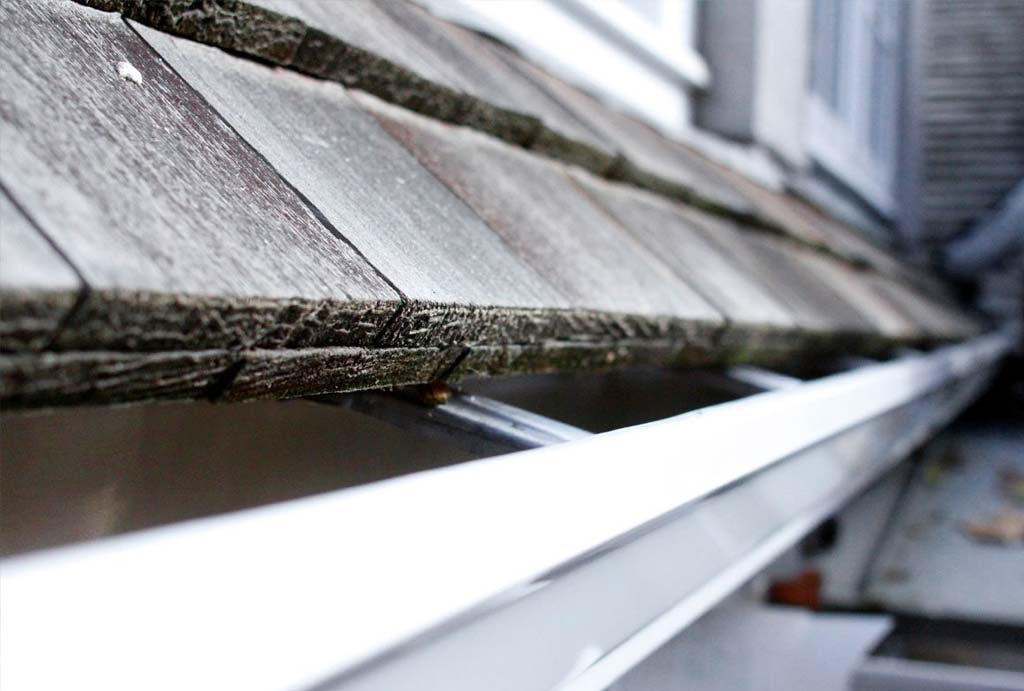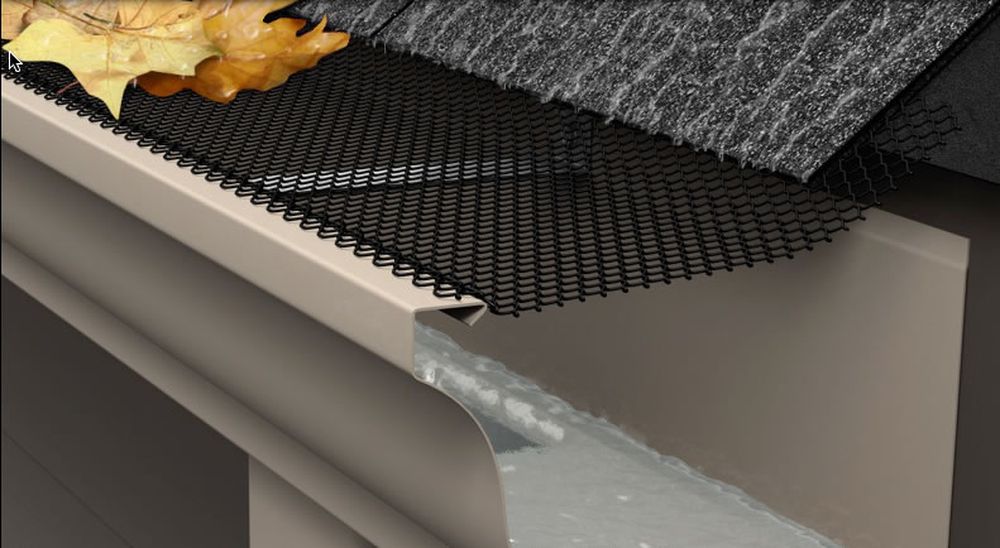At Stay Dry Roofing, we protect homes across Indianapolis every day. Gutters might not be the most glamorous part of your house, but they’re one of the most important. When gutters fail, water follows the path of least resistance and that path can lead right into your siding, roof, foundation, or basement. This guide walks you through the difference between repair and replacement, explains the signs to watch for, breaks down typical costs and timelines, and gives you practical next steps tailored to Indianapolis weather and homes. We researched the top local articles and combined what we learned with our own experience so you can make a smart, long-lasting choice.
Why gutters matter in Indianapolis
Indianapolis sees big swings in weather heavy spring rains, summer storms, and freeze–thaw cycles in winter that stress building components. That means gutters here must handle large water volumes and survive temperature changes that can cause metal to expand and contract. When gutters fail, water can pool near your foundation, rot fascia boards, ruin landscaping, and cause basement leaks. Simply put good gutters save you money and headaches down the road.
Repair vs. replacement
Repair: targeted fixes to specific problems patching a leak, re-securing hangers, unclogging a downspout, or sealing a joint. Repairs are usually faster and less expensive up front and can be the right call when damage is isolated.
Replacement: removing the old system and installing a new one. Replacement is the better long-term investment when damage is widespread, sections are corroded, the system is the wrong size or slope for your roof, or the gutters are simply past their useful life. Replacement also gives you the chance to upgrade to seamless gutters, larger downspouts, or better materials.
Signs that a repair is probably enough
You might choose repair when problems are localized, and the rest of the gutter system is solid. Watch for:
- Small leaks or pinholes near seams that can be sealed.
- Loose hangers or minor sagging near a few sections; tightening or adding hangers fixes this.
- A single clogged downspout or isolated debris build-up that cleaning solves.
- Minor dents or one-off damage (from a ladder bump or falling limb) that don’t affect the slope.
If those are the only issues, a professional repair can restore function quickly and at reasonable cost.
Signs you should replace your gutters
Replacement is usually the right choice when problems are systemic, repeated, or when the current system is simply too old. Consider replacement if you see:
- Multiple leaks or long runs of rust or cracks. Patchwork won’t hold long.
- Gutters pulling away from the fascia in several places often a sign that the hangers or fascia have failed.
- Constantly overflowing gutters or water pooling around your foundation despite cleaning and minor repairs. That means the system isn’t sized or sloped properly.
- Sections that are bent, crushed, or detached after a storm, or repeated damage after repairs.
- Age of the system: Most aluminum gutters last 15–20 years (longer for copper). If your gutters are older and showing wear, replacement gives you decades of reliable service.
Cost considerations and what to expect in Indianapolis
Costs vary by material, home size, complexity (cornices, rooflines), and whether you choose sectional or seamless systems. Local articles and contractors show common local ranges:
- Repair jobs: Minor repairs (resealing corners, replacing a downspout, tightening hangers) often run significantly lower than replacement sometimes a few hundred dollars for small fixes.
- Replacement: Expect a wide range depending on material and length. Many Indianapolis jobs fall somewhere between low thousands for a standard aluminum seamless system to higher for copper or specialty profiles. Online local estimates vary; a typical full system for a standard-sized home often runs from roughly $1,200–$4,000 depending on choices and length.
Keep in mind: repeated repairs add up. A one-time replacement may cost more up front but often saves money and stress over time if the system is failing in multiple places.
Material choices and local pros/cons
- Aluminum the most common. Lightweight, rust-resistant, affordable, and available in seamless options. Great for most Indianapolis homes.
- Steel stronger but can rust over time unless properly coated. Better for homes needing a more robust profile.
- Copper premium look and very long-lived, but costly. Works well on historic or higher-end homes where appearance matters.
- Vinyl inexpensive and rust-proof but can become brittle in extreme cold; not always the best long-term choice for our freeze–thaw cycles.
At Stay Dry Roofing, we work with homeowners to pick the best material for budget, aesthetics, and how long you want the system to last.
Seamless vs. sectional. Why seamless often wins
Seamless gutters are custom-formed on-site in a continuous length, which reduces joints the most common leak points. For Indiana homes, where rain bursts and ice can overload seams, seamless gutters frequently provide better, longer-lasting protection. Sectional gutters can still work for smaller budgets or simpler roofs but expect more maintenance over time.
What a professional inspection looks like
When we inspect gutters, we look beyond the obvious. A thorough gutter inspection includes:
- Visual inspection from the ground for sagging, big dents, or visible separation.
- Roofline and fascia check to make sure attachment points are sound. Leaking gutters often mean rotten fascia under the fasteners.
- Downspout flow test — we run water to see where it goes and check for clogs or poor drainage.
- Material and seam evaluation to determine if the system can be economically repaired or if replacement is the better investment.
- Surrounding grading to confirm that water directed away from the house is actually reaching safe drainage areas.
A proper inspection will tell you whether a repair will restore function or whether replacement will offer long-term peace of mind. We provide honest recommendations so you can choose what’s right for your home and your budget.
When to repair or replace
- Repair immediately: leaks into your home, water pouring into the foundation, or sections that are actively pulling away. Don’t wait water damage gets worse quickly.
- Replace before winter: if your gutters are old, brittle, or sagging, replacing before freeze–thaw season prevents ice-related damage and winter backups.
- Schedule upgrades in spring or fall: milder weather makes installation easier and reduces scheduling delays.
Gutter guards and maintenance
Clogged gutters are one of the most common causes of failure. Installing gutter guards reduces debris buildup and lengthens service life, though no guard is maintenance-free. Regular cleaning (once or twice a year, depending on nearby trees) and periodic inspections keep systems working well and extend the time before replacement is needed. We offer cleaning, guards, and service plans designed for Indy trees and weather patterns.
Why hire a local pro and why choose Stay Dry Roofing
Local contractors understand local weather, building codes, and common house styles. A professional installer avoids common mistakes (improper slope, undersized downspouts, insecure hangers) that lead to early failure. At Stay Dry Roofing, we’re Indianapolis-based and family-run. We treat gutters, roofs, and siding as a system fixing one without considering the others leaves gaps in protection. We back our work with experience, quick response, and clear communication. Learn more about our gutter services and how we coordinate gutter work with roofs and siding on our site.
How to get a fair estimate from any contractor
- Get a written, itemized estimate that lists materials, length, labor, and whether gutters are seamless or sectional.
- Ask about warranties on materials and workmanship.
- Confirm cleanup and disposal are included.
- Ask for references or photos of similar recent jobs.
- Beware of very low bids they often hide poor materials or workmanship.
If you’d like, we’ll provide a free inspection and clear, itemized estimate so you can compare apples to apples. Contact information is on our site.
Final checklist: repair or replace?
Choose repair if:
- Damage is localized (one or two spots).
- The system is otherwise in good shape and reasonably young.
- You want a short-term, lower-cost fix.
Choose replacement if:
- Damage is widespread (multiple leaks, rusted runs, many loose hangers).
- Gutters are old or the system is undersized for your roof.
- You want a long-term solution and lower maintenance.
We’re here to help
Gutters protect everything below them your roof, siding, foundation, and basement. Choosing repair or replacement matters. We combine local knowledge, careful inspections, and honest recommendations so Indy homeowners get the right outcome for their home and budget. Call or message us for a no-pressure inspection, and we’ll show you your options with clear costs and timelines.



